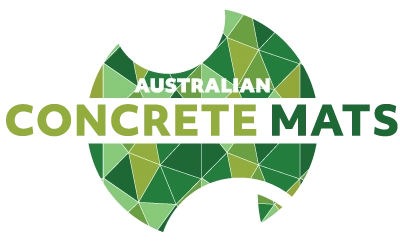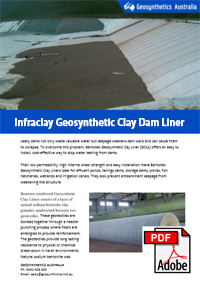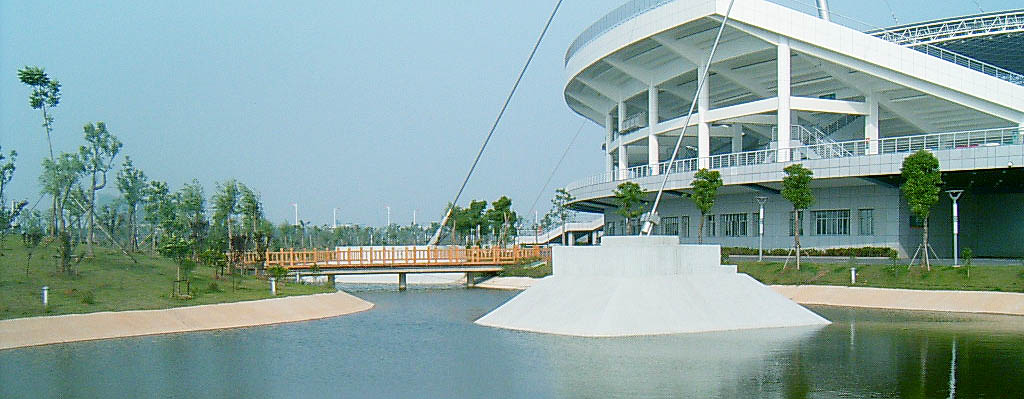
Infraclay lined artificial pond at Nanjing Sport’s Stadium
Infraclay Pond and Dam Liners
Leaking dams not only waste valuable water but seepage weakens dam walls and can cause them to collapse. To overcome this problem, Infraclay Geosynthetic Clay Dam Liners (GCLs) are used to stop water leaking from storage dams and ponds. Geosynthetic Clay Liners also prevent embankment seepage from weakening the dam structure.
Geosynthetics Australia’s Infraclay dam liners have low permeability, long-term stability, high internal shear strength and are self-healing when punctured. They are ideal for effluent ponds, tailings dams, farm dams, ponds, lakes, wetlands and irrigation canals. They provide long term hydraulic containment, slope stability and are easily installed with farm equipment.
Infraclay dam liners consist of a layer of low permeability natural sodium bentonite clay granules tightly sandwiched between two geotextiles. A needle-punching process locks the geotextiles together, resulting in excellent multi-axial strain behaviour. Natural sodium bentonite absorbs water to create a high swelling, self-healing and low permeability dam liner. For high head conditions or where a barrier layer is required against gas emissions, a PE geomembrane can be bonded to Infraclay.
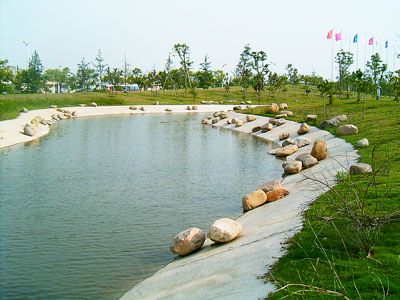
Ornamental pond lined with Infraclay Geosynthetic Clay Liner
Benefits
- Infraclay is extremely flexible and very strong.
- Easy to install with farm equipment.
- Bentonite clay’s swelling action self-seals small holes caused by wildlife, stock or ground movement.
- Natural bentonite clay does not oxidise or crack over time, is not damaged by bushfires and offers lifetime protection.
Applications
- Dams and dam wall liners
- Ornamental ponds
- Effluent ponds
- Stormwater retention ponds
- Canal Liners
Dam liner installation

Laying Infraclay Geosynthetic Clay Liner to waterproof a concrete slab and ornamental pond
Using Infraclay clay liners prevents the loss of valuable water. They are particularly recommended in remote locations or where hauling clay is impracticable. Lining farm dams with Geosynthetic Clay Liners is very cost effective because it can be done with basic farm machinery. Unlike HDPE membranes, clay liners do not require specialised equipment to weld the joins.
Before laying the GCL, the surface must be well prepared. A heavy roller then compacts and smooths the soil. There should be no abrupt elevation changes, voids, cracks or standing water. To avoid liner damage, remove or cover all sharp-edged rocks, stones, sticks, etc, to at least 12mm .
To prevent the liner sliding down the dam wall, anchor Infraclay rolls into a trench at the crest of the dam. Unroll Infraclay down the dam face using a backhoe and spreader bar assembly. Finally, seal the overlaps with bentonite clay granules and cover the Geosynthetic Clay Liner with 30cm of soil. Once laid, avoid vehicular traffic.
Liquid Containment Bunds
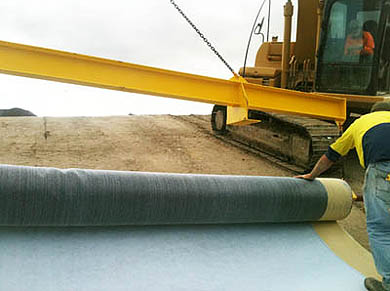
Capping a landfill with Infraclay Geosynthetic Clay Liner
Industrial liquid storage usually requires a spill containment bund to provide stable and long term protection against potential leaks. Geosynthetic clay liners reduce the likelihood of site soil and groundwater contamination and subsequent remediation and rehabilitation costs. Infraclay is compatible with most liquids likely to spill into the containment bund. Infraclay PE coated geosynthetic clay liners provide an additional barrier to liquid migration, prevent ion exchange with the sub-soil and ensure that the bentonite clay remains hydrated over time.










